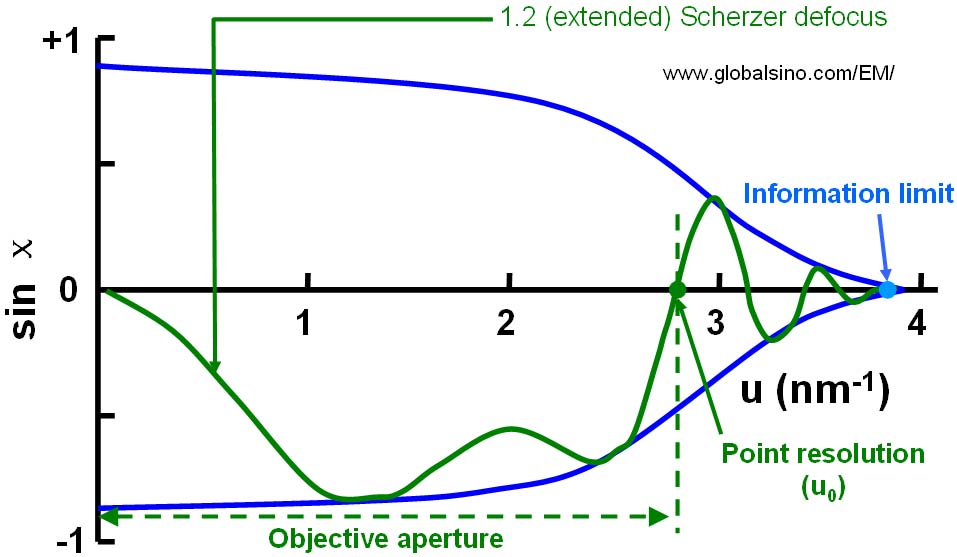=================================================================================
The probe forming aperture in STEM is often compared to the objective aperture in parallel beam illumination in CTEM. The size selection of a post-specimen objective aperture in CTEM is usually made to improve the imaging contrast through exclusion of scattered electrons. Bright-field high resolution imaging in CTEM are normally achieved as long as the aperture is not too small for the collection of electrons scattered to the Bragg spots corresponding to the expected lattice spacings. In other words, especially for analytical HRTEM imaging, a sufficiently large objective aperture is normally used such that no loss of imaging information originates from the aperture and the effect of circular function, A(k), can be ignored. The objective aperture in CTEM essentially is a linear filter determining the frequencies to be included in the image, for example in a weak phase object filtering out the high frequency oscillations in the CTF. The lower frequencies are not affected by increasing the aperture size.
In most cases one usually uses an objective aperture that cuts off all distances smaller than the point resolution, as shown in Figure 3745, making the atom columns appear as single black spots which makes the images interpretable, but means that a lot of information about the sample is lost.

Figure 3745. Schematic illustration of the difference between the point resolution and
information limit, together with the optimal aperture size in TEMs.
The optimal size of the objective aperture (αOptimum = 1.41 (λ/Cs)1/4) in STEM and SEM imaging is smaller than the optimal objective aperture size for coherent imaging in TEM (αOptimum = 1.56 (λ/Cs)1/4), which is also known as the Scherzer aperture.
The diffraction effect of the objective aperture is important for HRTEM imaging. The radius of the Airy disk produced by the objective aperture is given by,
rAiry ~ 1.2λf/D ---------------- [3745]
where,
f -- The focal length of the lens;
D -- The aperture diameter.
Therefore, in TEM imaging, the spatial resolution degrades when a small objective aperture is used to reduce the inelastic scattering contribution to bright field images, or to exclude closely spaced spots to form dark field images.
|
